Last week, Giannis Antetokounmpo delivered a performance for the ages. Leading the Milwaukee Bucks to their first NBA Championship since the days of Kareem and The Big O, the Greek Freak scored 50 points and grabbed 14 boards in a closeout win over the Phoenix Suns.
For Nike, the timing was perfect as the brand was already rolling out its latest signature shoe, the Nike Zoom Freak 3.Â
Except it wasn’t.Â
Throughout the postseason, Giannis continued to crush in his previous pair, the Nike Zoom Freak 2.
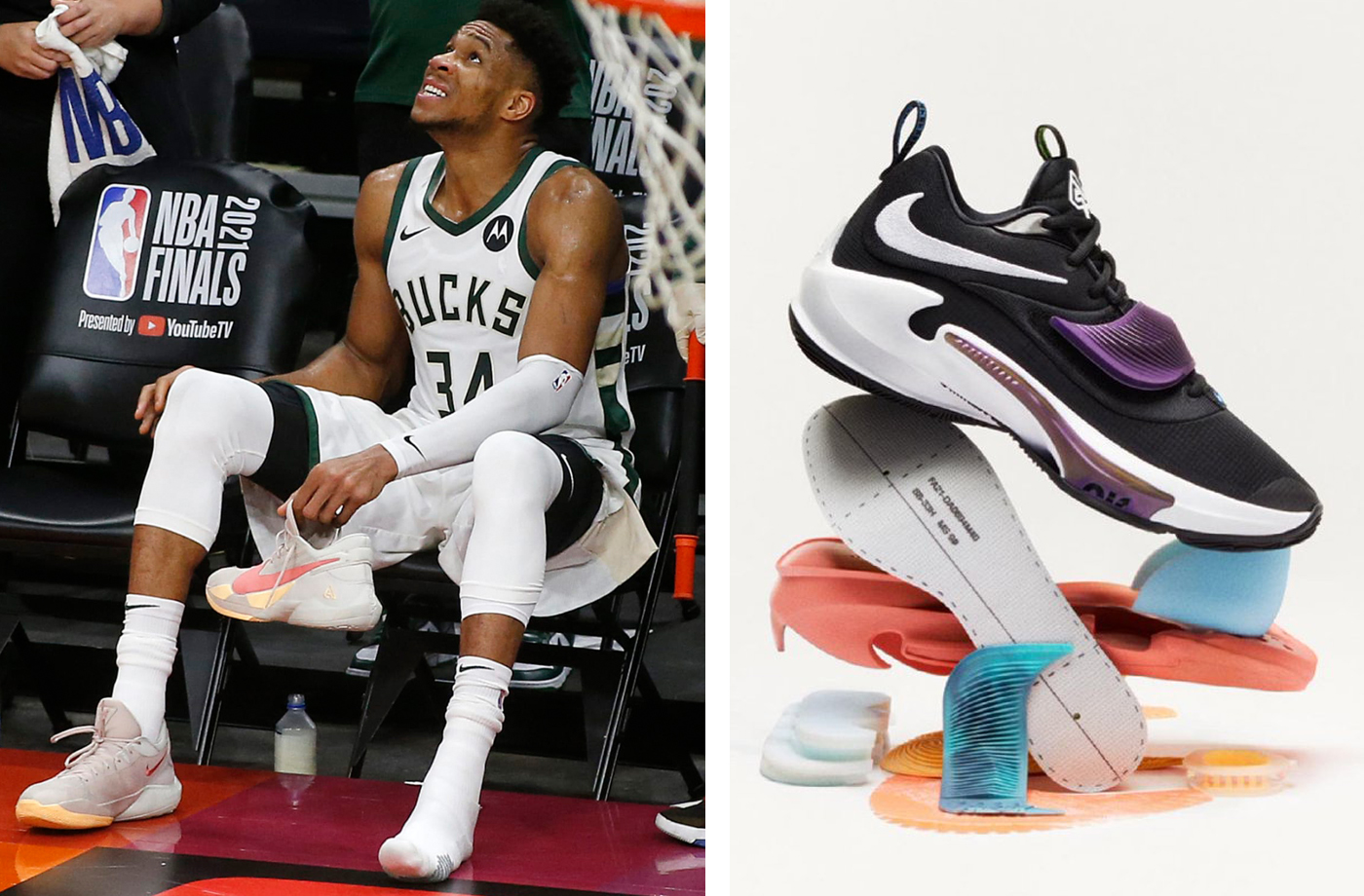 Giannis Antetokounmpo at the 2021 NBA Finals in the Nike Zoom Freak 2 (left) &Â Zoom Freak 3 (right), images via Behind the Buck Pass & Nike
Giannis Antetokounmpo at the 2021 NBA Finals in the Nike Zoom Freak 2 (left) &Â Zoom Freak 3 (right), images via Behind the Buck Pass & Nike
Like many high-profile players, Giannis is a creature of habit. He continued to play in the Freak 2 because he was accustomed to it and did not want to risk routine when on the world’s biggest stage.Â
It’s not new for him, and it’s not wrong. The reason Nike even unveils his shoe at the peak of the postseason is so that their stable of signature stars – LeBron, KD, Kyrie, PG, and Giannis – are staggered, thus ensuring that there is always something new on the market.
But, should there always be something new?
Maybe not.
While we’re all for progression, the reality of retail is that not all signature shoes are created equal, or more so, not all should be on the same calendar.
With the arrival of Michael Jordan in the 1980s and his ascent into the 1990s, it soon became commonplace or expected that an NBA athlete of said status should have a new shoe each season.
However, there’s only one Michael Jordan.Â
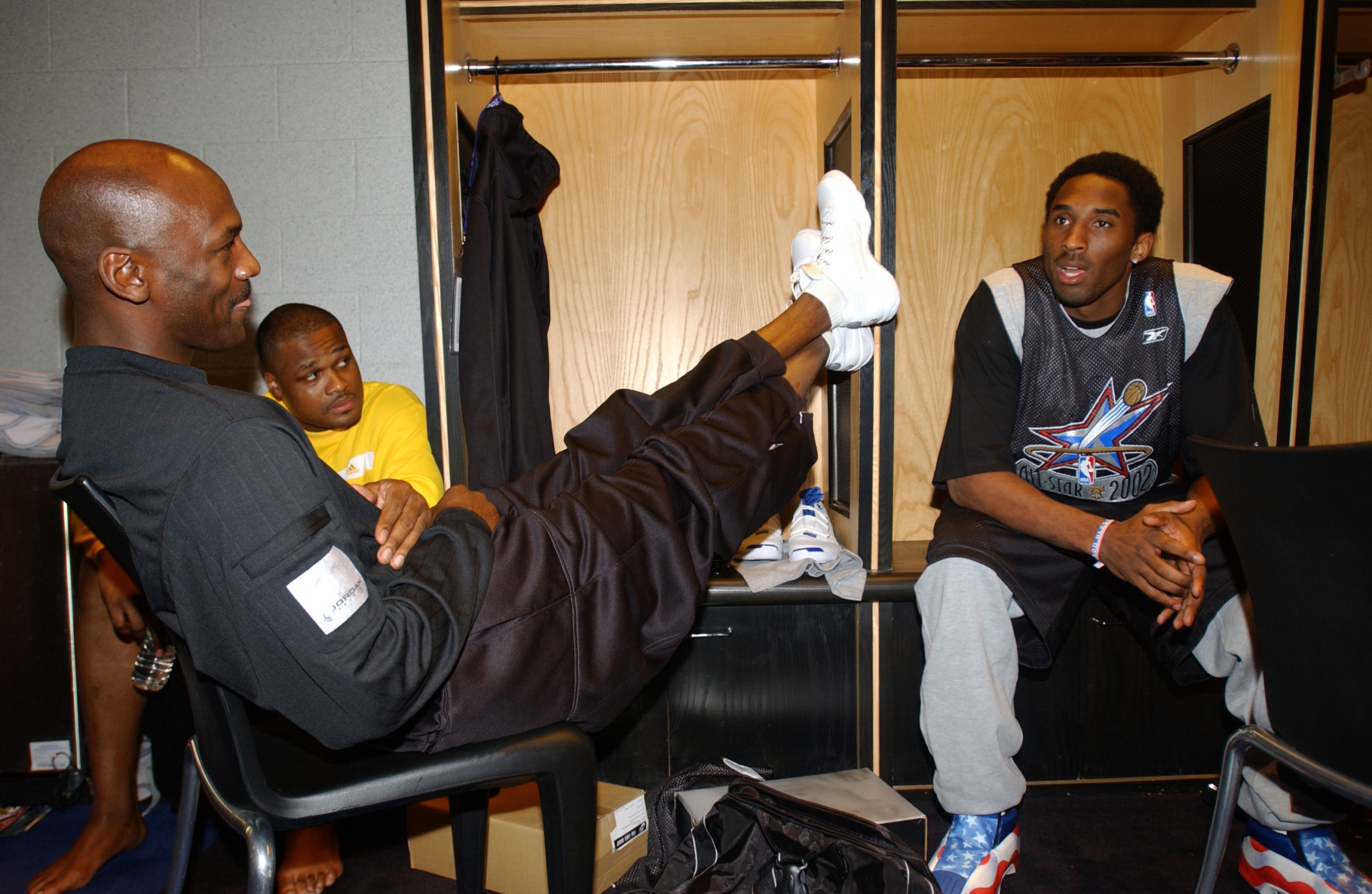 Image via Getty Images
Image via Getty Images
Since the signature shoe explosion of the 1990s, players ranging from Allen Iverson to Penny Hardaway to Kobe Bryant have carried lines likened to their names to high heights. Eventually, each line was ended due to retirement, market fatigue, or injury. Realistically, even the greatest lines become redundant or unappealing at a certain point.
In the 2000s, signature shoes saw varying success from a cultural and commercial standpoint. Over that era, the likes of Tracy McGrady and Vince Carter came out with models of varying success with adidas and Nike. At the same time, Jordan Brand looked to youthen their roster with namesake shoes for Carmelo Anthony and Chris Paul.
LeBron’s line peaked heading into the 2010s, finally straddling the line between casual collectible and aspirational tech. Kobe ditched denim desires altogether, channeling soccer and owning the performance space when paired with designer Eric Avar.Â
By the 2010s, the pace for signature shoes saw a spike. Nike athletes like LeBron and Kyrie have lower-priced diffusion lines. Everyone from Derrick Rose at Adidas to Stephen Curry at Under Armour saw .5 and playoff variations over the course of one season. In fact, Steph’s signature series at one point adopted two models in a one-year timeline to make up for lost seasons wearing the Swoosh.
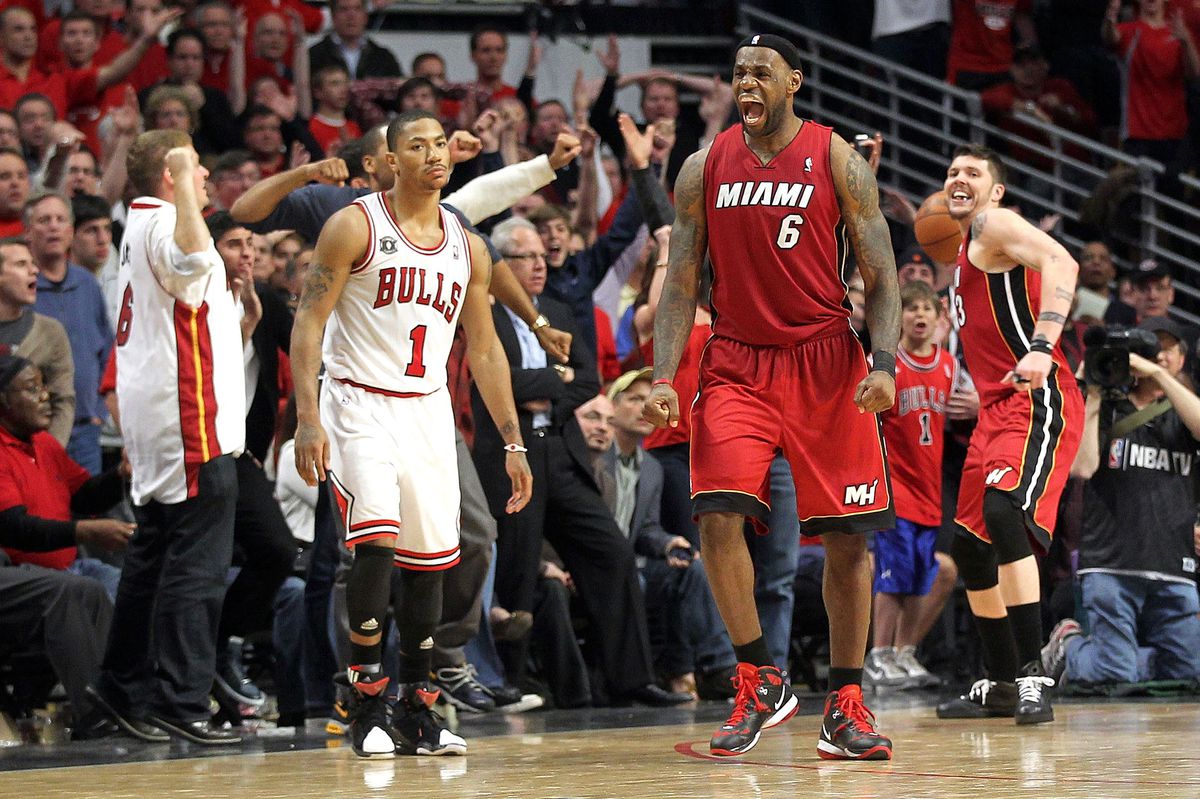 Image via The Ringer
Image via The Ringer
Make no mistake, this stance to adjust the rate at which signature shoes are released is not to shade any All-Star talent nor slow innovation. Instead, it’s a case to rethink the annual Air Jordan treadmill many brands are blindly racing on.Â
Case in point: would the market be more excited for an upgraded PG 1, Kyrie 2, Freak 1, Dame 1, or KD 4 than that of an entirely new model for PG, Kyrie, Giannis, Dame, or KD? That’s not to dismiss any of their play or worthiness; instead, at some point, it makes sense to lean into what the brand’s done best rather than reinvent the wheel each year.Â
When considering the most popular line in modern footwear, it’s Yeezy. During the Nike days, there were three years between the launches of the Nike Air Yeezy 1 and Nike Air Yeezy 2. Since switching to adidas, the partnership’s most popular silhouette – the adidas Yeezy Boost 350 – has been subtly tweaked in the form of V2 updates and adjustments to the Primeknit pattern. Similarly, one could look to New Balance’s popular 990 series, which sees incremental updates in a fashion far from annual and effective.
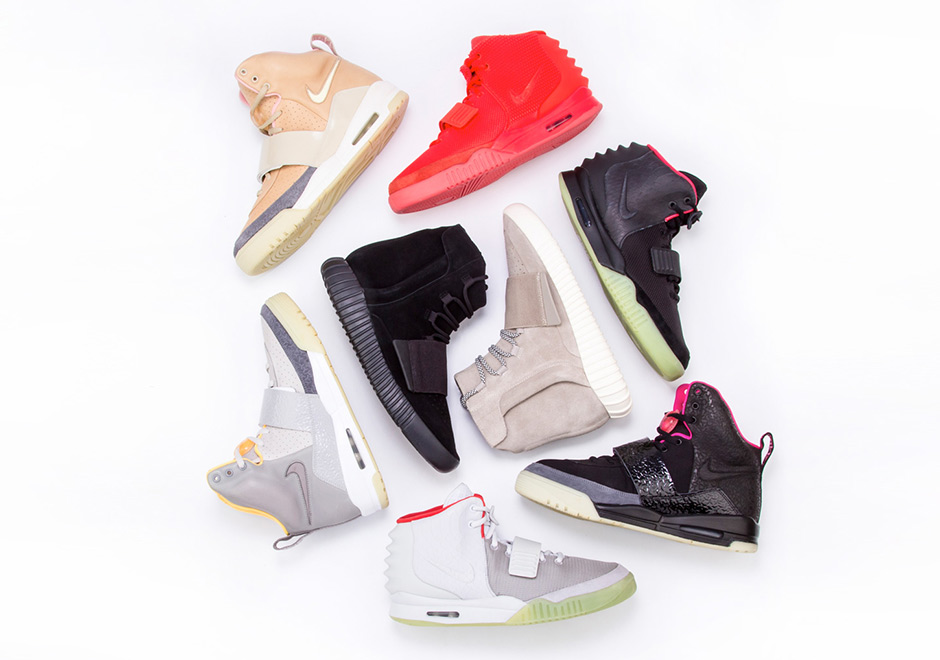 Image via Sneaker News/Stadium Goods
Image via Sneaker News/Stadium Goods
There’s a similar science that holds true for the retro window. In the history of the Air Jordan franchise, no model has meant more in its second life than the Air Jordan 11. At the time of its first re-release, the Air Jordan 11 returned in 2000 – only five years after its retail debut. The flash and familiarity allowed the model to have long legs from the jump and for years to come.Â
This is also proven by the Nike Air Force 1 and Reebok Question, which more or less never left the market and also never quite lost their luster. Conversely, popular models that returned further out from the five-year window like the Nike Air Foamposite One, Air Jordan 3, and even the Air Jordan 1 took longer to catch. Somewhat ‘bust’ or ‘sleeper’ rounds of retros like Jordans in 1994 and Foamposites in the mid-2000s hit harder the next time because the masses had to be refamiliarized at retail before they were ready to buy. Such is seen by the slow burn on LeBron retros, making one have to wonder if Nike has missed its window on bringing back KDs or Kyries.
As mentioned, even a cultural icon like Allen Iverson had his biggest hit, the Reebok Question, in circulation for almost his entire career. At various points, new colorways of the Question and new variations of the said shoe were more popular than the Answer model on the market at the same time.
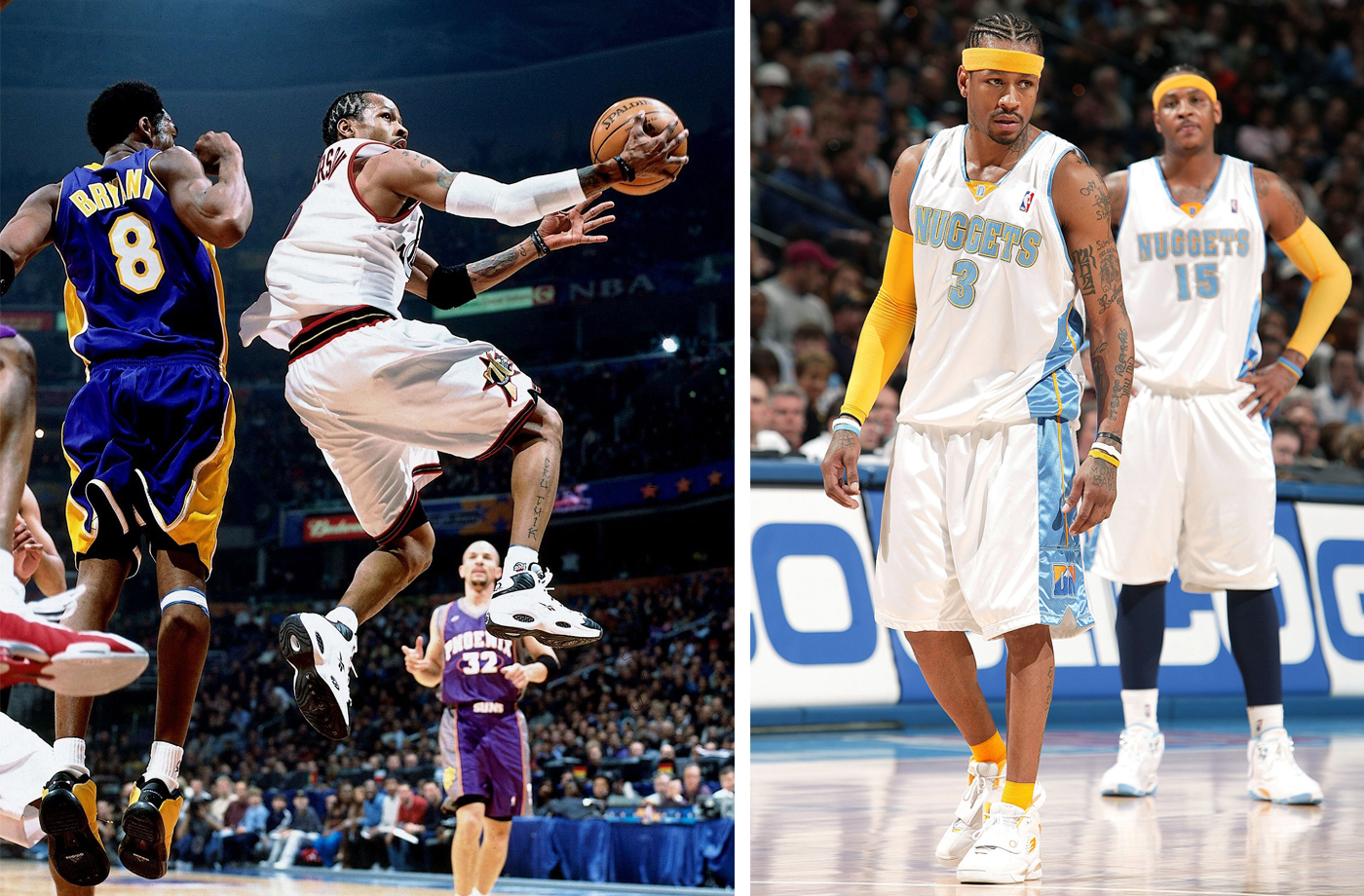 Images via Getty Images
Images via Getty Images
For many of us, our love of signature sneakers ties back to our childhood. Watching commercials for Penny Hardaway on television as kids and having the ability to buy his beloved models in retro life as adults asks for that same sentiment to be carried on for today’s youth. In many ways, it is. New releases from Kyrie Irving and Steph Curry captivate kids from the park to the AAU circuit, much in part to their prolific play, relatable size, and often accessible price point. For some stars, the ideals align, and a long line is in the cards. For most, a signature series only has so much steam.
Releasing new signature shoes is not a problem and generally speaking, it’s a great thing. Today’s youth deserves to represent their favorite players on foot and do so in the latest technology. However, the rate at which new models are rolled out with what feels like no regard for market demand or player preference seems dated. If Paul George would prefer to play in previous PGs, why would Nike release a new one? When the youth of the game gets more excited about the KD 4 than the KD 14, is it time to renew the old favorites?
The greatest signature stars the game has seen, Michael Jordan, Penny Hardaway, and Allen Iverson, all hooped in their old shoes over the course of their careers. Each line’s marquee models all returned in a window when fans still had connection to the product. If the top-tier brands don’t smarten up on why they release signature shoes when they do, then fans will start asking why they should even buy new signature shoes in the first place.

